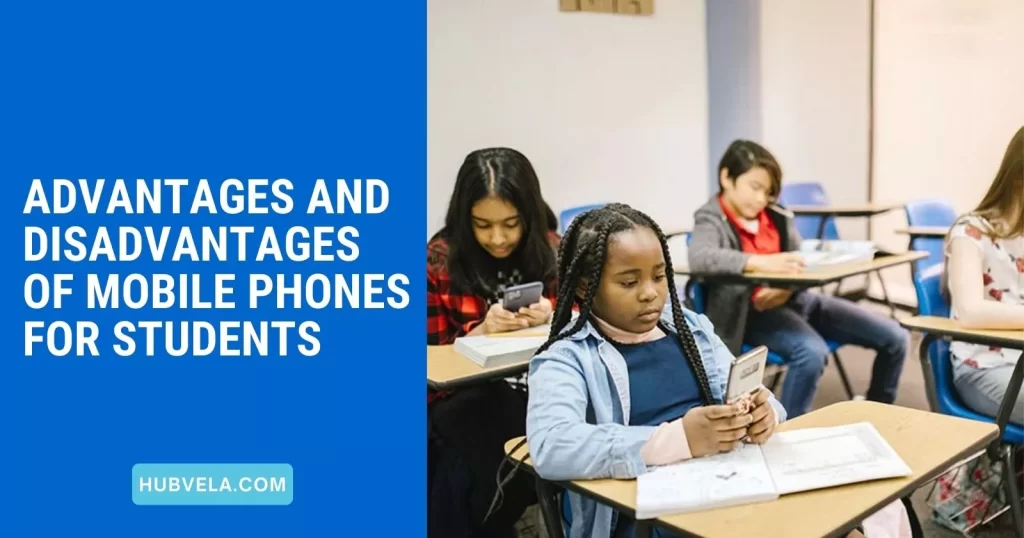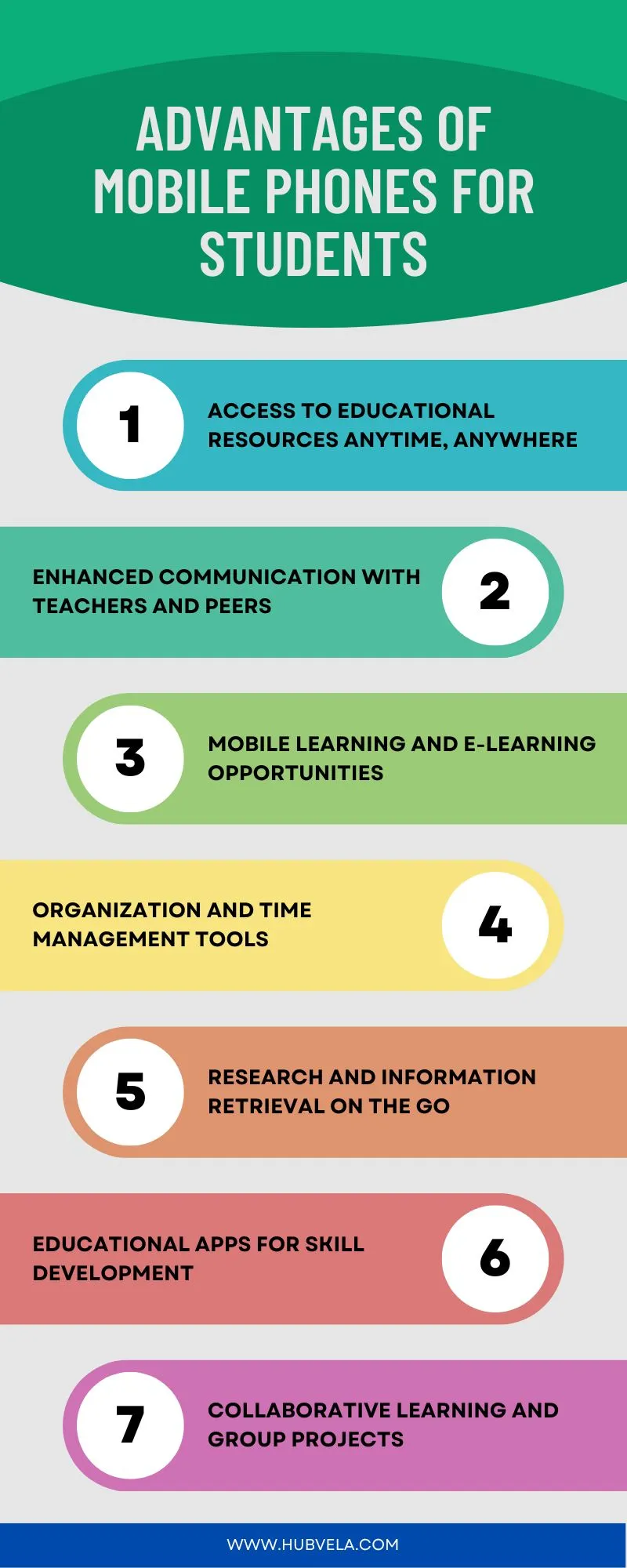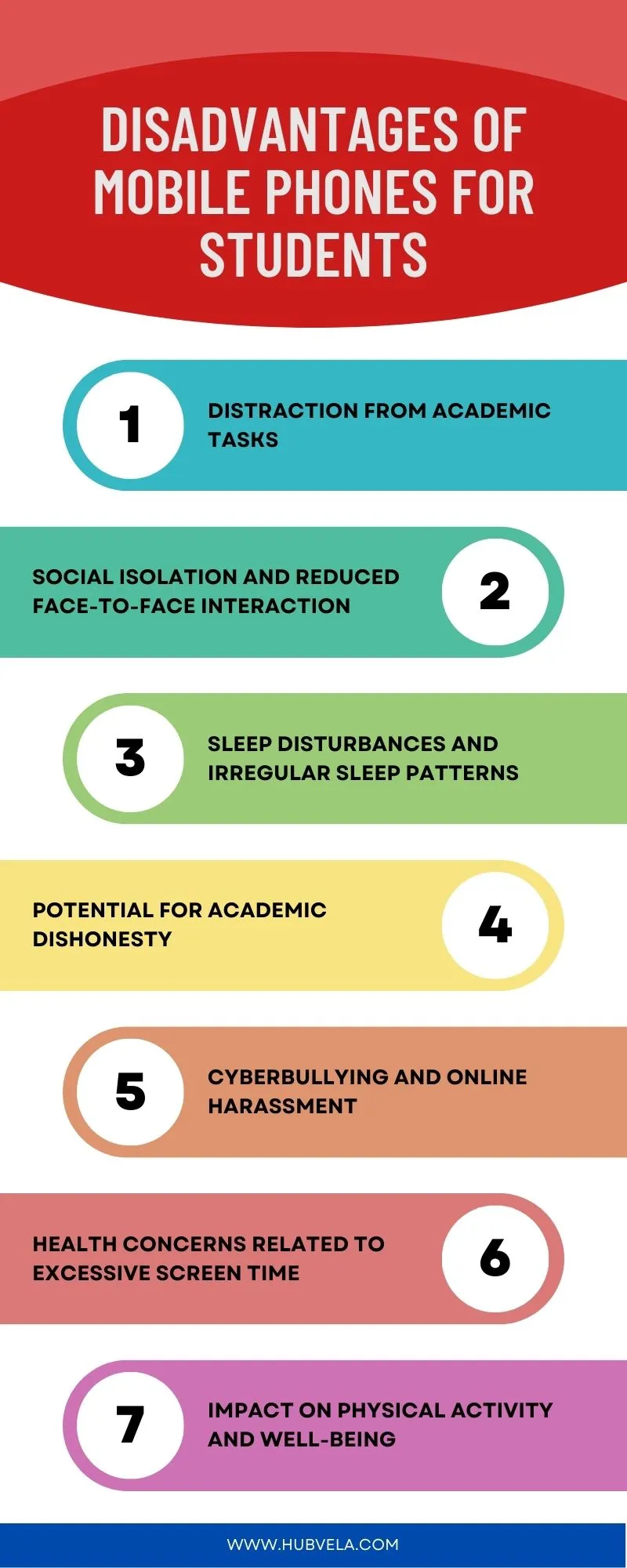Mobile phones have become an essential part of our daily lives, and students are no exception. They use mobile phones for various purposes, including communication, entertainment, and education.
However, the use of mobile phones by students has both advantages and disadvantages. In this article, we will discuss the pros and cons of using mobile phones for students.
We will explore the different ways in which mobile phones affect students’ academic performance, social life, and mental health. We will also examine the impact of mobile phones on students’ engagement in the classroom and their anxiety levels.
By the end of this article, you will have a better understanding of the advantages and disadvantages of mobile phones for students.

--Advertisement--
Advantages of Mobile Phones for Students
Mobile phones have become an essential part of our daily lives, and students are no exception. While there are concerns about the negative impact of mobile phones on students, there are also several advantages that cannot be ignored. We will explore the advantages of mobile phones for students.

1. Access to Educational Resources Anytime, Anywhere
Access to educational resources anytime, anywhere is one of the significant advantages of mobile phones for students.
With the help of mobile phones, students can access educational resources such as e-books, online courses, and educational videos anytime and anywhere.
They can download educational apps that provide them with access to a wealth of information on various subjects.
Moreover, students can use their mobile phones to collaborate with their peers and teachers, share notes, and participate in online discussions.
This flexibility in accessing educational resources can help students to learn at their own pace and convenience, making learning more effective and enjoyable.
2. Enhanced Communication with Teachers and Peers
Mobile phones have become an essential tool for students, and one of the advantages is enhanced communication with teachers and peers.
With mobile phones, students can easily communicate with their teachers and classmates through various channels such as text messages, emails, and social media platforms.
This allows students to ask questions, clarify doubts, and collaborate on projects outside of the classroom.
Additionally, mobile phones enable students to stay connected with their peers, which can help them build stronger relationships and support networks.
Mobile phones provide students with a convenient and efficient way to communicate with their teachers and peers, which can enhance their learning experience.
3. Mobile Learning and E-Learning Opportunities
Mobile learning and e-learning opportunities have gained popularity in recent years due to their numerous benefits. One of the biggest advantages of mobile learning is its convenience and flexibility.
With mobile learning, learners can access educational materials and engage in learning activities at any time, from any location, making it possible to fit learning into a busy schedule, no matter how hectic it may be.
Mobile learning also enables learners to study at their own pace, allowing them to take as much or as little time as they need to understand the material.
Additionally, mobile learning can improve engagement and motivation, as it provides a more interactive and personalized learning experience.
Furthermore, it can increase accessibility to education for individuals who may not have access to traditional classroom settings. Mobile learning also offers a blended learning approach that can enhance the education of young learners.
4. Organization and Time Management Tools
Organization and time management tools are essential for students to stay on top of their academic and personal responsibilities. There are numerous apps available that can help students stay organized and improve their time management skills.
Some of the best time management apps for students include Evernote, iStudiez Pro, myHomework, TickTick, and 2Do.
These apps can help students keep track of their assignments, deadlines, and schedules, as well as prioritize their tasks and increase their productivity.
Additionally, these apps can be synced across multiple devices, making it easy for students to access their information from anywhere.
By using these organization and time management tools, students can better manage their time, reduce stress, and achieve their academic goals.
5. Research and Information Retrieval on the Go
Mobile phones have become an essential tool for students in today’s world. One of the significant advantages of mobile phones for students is the ability to conduct research and retrieve information on the go.
With the help of mobile phones, students can access a vast amount of information from anywhere at any time. They can use search engines to find relevant information, access online libraries, and even watch educational videos.
Mobile phones also allow students to stay connected with their classmates and teachers, making it easier to collaborate on projects and assignments.
In addition, mobile phones can help students stay organized by using apps that allow them to create to-do lists, set reminders, and manage their schedules.
Mobile phones have become an indispensable tool for students, providing them with the convenience and flexibility to access information and stay connected with their academic community.
6. Educational Apps for Skill Development
Mobile phones have become an essential part of our daily lives, and students are no exception. Educational apps for skill development are one of the advantages of mobile phones for students.
These apps offer a range of benefits, including the ability to learn new skills, improve existing ones, and access educational resources from anywhere.
With the help of these apps, students can learn at their own pace and in their own time, making education more accessible and convenient.
Additionally, educational apps can help students stay organized, manage their time effectively, and track their progress.
The use of educational apps on mobile phones can be a valuable tool for students to enhance their learning experience.
7. Collaborative Learning and Group Projects
Collaborative learning and group projects can be enhanced by the use of mobile phones for students. Cell phones in the classroom can foster collaboration and communication between teachers, parents, and learners.
There are numerous discussion tools and apps that learners can download and use to work on group projects or communicate with peers after school hours.
Additionally, teachers can use apps to create, mark, and grade students’ assignments and test their comprehension of a topic at the end of the lesson.
Smartphones also provide an easy way for teachers to facilitate and inspire student learning and creativity while increasing motivation, as research shows that when students are engaged in their learning, they are less likely to succumb to distractions.
Disadvantages of Mobile Phones for Students
Mobile phones have become an integral part of our lives, and students are no exception. While mobile phones have several advantages, they also have some disadvantages, especially for students. We will delve into the disadvantages of using mobile phones by students.

1. Distraction from Academic Tasks
Mobile phones can be a major distraction for students, especially when they are trying to focus on academic tasks. The disadvantages of mobile phones on students are evident in their potential to disrupt the learning process.
According to a study published in Frontiers in Psychology, mobile phone distraction has a negative and significant association with psychological well-being.
The presence of electronic devices in the classroom is not the problem, but rather the way we incorporate them into situations in which we are already inclined to pay attention to too many things.
This highlights the disadvantages of mobile phones in school, where they can hinder effective learning environments.
A meta-analysis published in ScienceDirect found that excessive mobile phone use has been associated with distraction in the classroom, further underscoring the negative impact of mobile phones on students’ educational experiences.
Students who are addicted to their phones tend to lose focus, and their academic performance suffers badly due to the mobile phones.
A study published in PMC found that cell phones are another attractive device that can affect students’ attention and concentration in the classroom, as students can be easily distracted by them.
Teachers need practical and enforceable strategies for dealing with phones in their classrooms to mitigate the disadvantages of mobile phones on students and maintain a productive learning environment.
2. Social Isolation and Reduced Face-to-Face Interaction
Mobile phones have become an integral part of students’ lives, but they also have some disadvantages. One of the significant drawbacks of mobile phones for students is social isolation and reduced face-to-face interaction.
Students tend to spend more time on their phones, which can lead to a lack of social interaction and isolation. They may miss out on opportunities to interact with their peers and engage in group activities.
This can lead to poor social skills, which can affect their personal and professional lives in the future.
Additionally, excessive use of mobile phones can lead to addiction, which can further exacerbate social isolation and reduce face-to-face interaction.
Therefore, it is essential to strike a balance between the use of mobile phones and social interaction to avoid the negative consequences of excessive phone use.
3. Sleep Disturbances and Irregular Sleep Patterns
Sleep disturbances and irregular sleep patterns are some of the disadvantages of mobile phones for students. The blue light emitted by mobile phones can interfere with the production of melatonin, a hormone that regulates sleep.
Students who use their phones before bedtime may experience difficulty falling asleep, staying asleep, or waking up feeling rested.
Additionally, the constant notifications and alerts from mobile phones can disrupt sleep patterns and lead to sleep deprivation, which can negatively impact academic performance, mood, and overall health.
It is important for students to establish healthy sleep habits and limit their use of mobile phones before bedtime to avoid these negative effects.
4. Potential for Academic Dishonesty
Mobile phones have become an integral part of students’ lives, but they also have their disadvantages. One of the potential drawbacks of mobile phones for students is the increased potential for academic dishonesty.
With access to the internet and various apps, students can easily cheat on exams or plagiarize assignments. This can lead to a lack of understanding of the material and ultimately harm the student’s academic progress.
Additionally, the use of mobile phones in the classroom can be a distraction for both the student using the phone and their peers.
It is important for students to be aware of the potential disadvantages of mobile phones on college campuses and to use them responsibly.
5. Cyberbullying and Online Harassment
Mobile phones have become a ubiquitous part of modern life, but the disadvantages of mobile phones in students’ lives are a major issue. One of the most significant concerns is the issue of cyberbullying and online harassment.
With the rise of social media and messaging apps, students are more vulnerable to these types of negative interactions. Additionally, mobile phones can be a distraction in the classroom, leading to poor academic performance and a lack of focus.
Students may also suffer from anxiety and isolation due to their phone usage, which can harm their mental health.
Finally, mobile phones emit electromagnetic radiation, which can be harmful to developing bodies and may lead to health problems such as poor vision and sleep loss.
6. Health Concerns Related to Excessive Screen Time
Excessive screen time, including the use of mobile phones, can have negative effects on the health of students. One major concern is the impact on physical health, as excessive screen time can lead to poor posture, eye strain, and headaches.
Additionally, the blue light emitted by screens can disrupt sleep patterns, which can negatively affect academic performance and overall well-being.
Mental health is also a concern, as excessive screen time has been linked to increased levels of anxiety and depression in young people.
Finally, excessive screen time can lead to a sedentary lifestyle, which can contribute to obesity and other health problems. Therefore, it is important for students to be mindful of their screen time and take steps to minimize its negative effects.
7. Impact on Physical Activity and Well-Being
Mobile phones have several disadvantages for students, including their impact on physical activity and well-being. Students tend to spend hours lost in the virtual world of their mobile phones, which distracts them from their studies and sports.
This can lead to poor academic performance, loss of focus, and anxiety. The wide array of video games and other applications not only disturb them but also cause anxiety in students.
Students suffer from debilitating headaches and migraines due to this constant phone usage, which further leads to anxiety and depression. Poor performance in exams leads to isolation.
Students prefer staying away from friends and family and lose themselves in their mobile phones. This can seriously harm their mental health.
Excessive use of mobile phones causes eyesight problems in most people, and it can lead to eye swelling. Furthermore, mobile phones can encourage cheating, facilitate bullying, and create educational achievement gaps.
Conclusion on Advantages and Disadvantages of Mobile Phones for Students
In conclusion, mobile phones have both advantages and disadvantages for students. On one hand, they can be used as a tool for learning, such as using educational apps and accessing online resources, which can be beneficial for students.
They can also be used for communication and organization, allowing students to stay in touch with their peers and teachers and keep track of their schedules, offering clear advantages of using mobile phones in school.
However, it’s essential to acknowledge the disadvantages of mobile phones to students as well.
Mobile phones can also be a source of distraction and disruption in the classroom, negatively impacting academic performance and life satisfaction.
Therefore, it is important for schools to establish clear guidelines and policies regarding the use of mobile phones in order to maximize their benefits and minimize their drawbacks, effectively addressing the disadvantages of using mobile phones in school.


